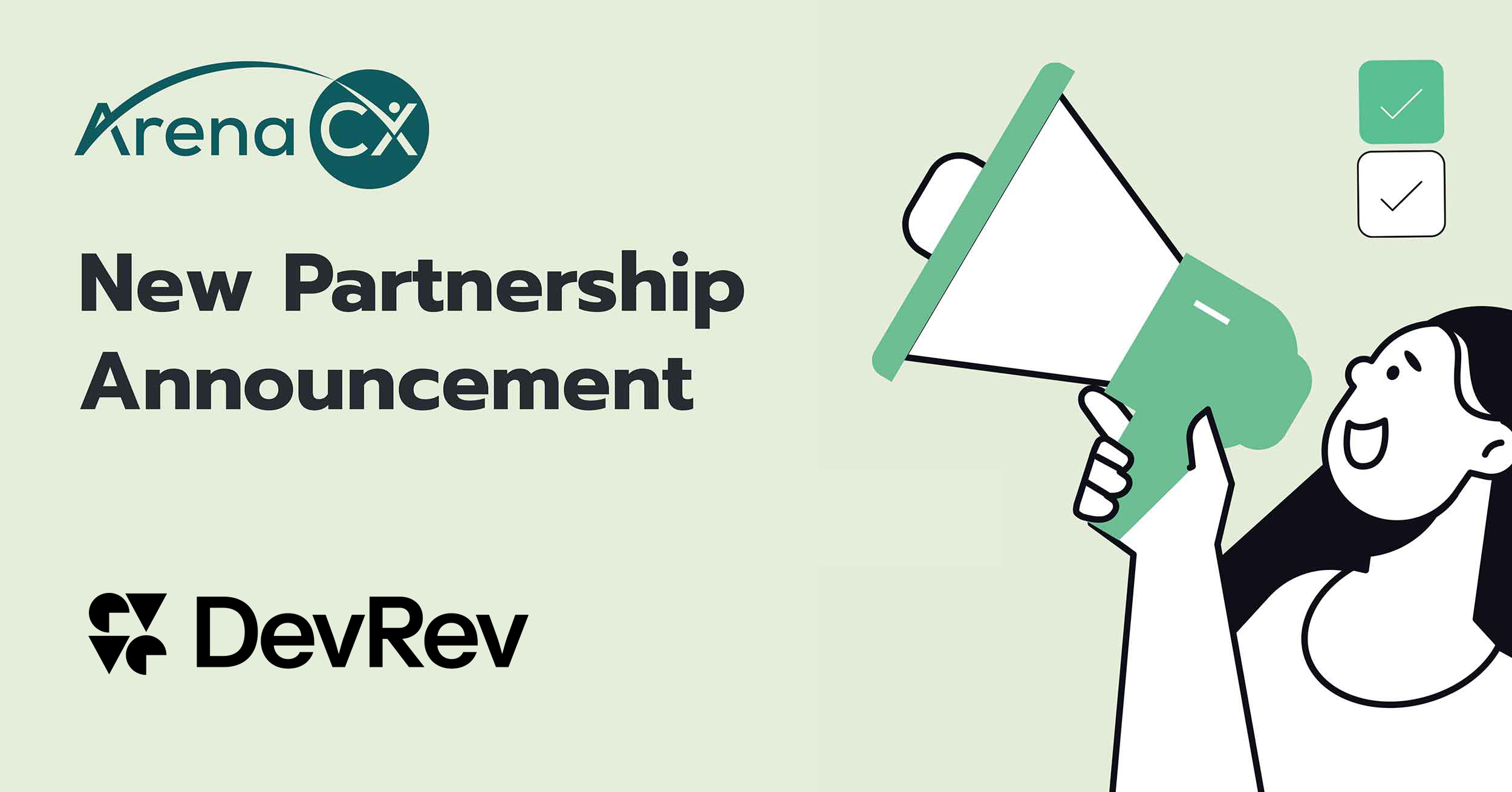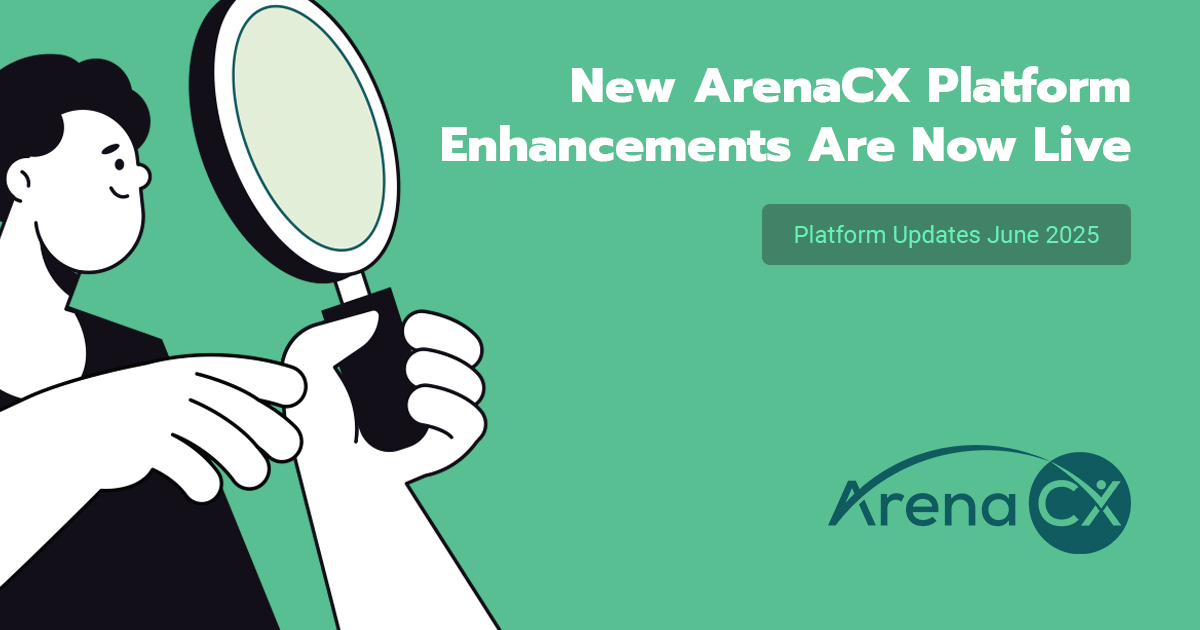Customer service outsourcing can be tricky – especially when it comes to aligning your external outsourced team with your in-house team. Fortunately, there are steps you can take to make sure you’re applying the right approach to create a smooth and fruitful partnership that yields the best customer experience results.
In this blog we’ll dive into:
👉Reasons why brands choose to have an internal team while also employing an outsourced team for the same or similar function,
👉The biggest challenges brands face when choosing to outsource,
👉And best practices from industry experts on the best ways to align your internal and external teams to maximize results for your brand and its customers.
Why would someone use an outsourced AND internal team for the same or similar function(s)?
In theory, it might sound silly to suggest that a brand would outsource a function that it also has an in-house team for, but it’s actually extremely common (and in most cases highly effective), especially in the customer service field.
There are three main reasons brands choose to outsource a function they also have internally:
Cost
Security
Capacity
Some brands who have highly technical tickets or proprietary information on their customers may want to keep the higher-level or more data-sensitive items in-house.
The higher the technicality level of a ticket, the more costly an outsourcing engagement can get.
In industries where data is extremely sensitive, like banking or telecommunications for example, some brands feel more comfortable keeping their customers’ data closer to the chest.
In these examples, it is usually the minority of customer cases that actually require a high level of technical skill or access to a customer’s proprietary information to answer, leaving the majority of customer tickets perfect candidates for an outsourced team to handle.
By keeping only the necessary cases in-house and outsourcing the remaining, a brand is able to save time and money by offloading many customer interactions to the hands of their extremely capable partners, increasing their reach and capacity.
The biggest challenges brands face with customer service outsourcing.
The biggest challenges brands face with customer service outsourcing.
Though we cover this particular topic in greater detail in our blogs What is Outsourcing and Should You Be Doing It and 5 Common Outsourcing Myths Debunked, there are a few highlights that really emphasize the challenges businesses face when starting a new outsourcing relationship.
- Challenges with effective onboarding and training.
- Lack of communication leading to poor outcomes and performance.
- A distrust due to poor past experiences resulting in a toxic “us” vs. “them” mentality.

The good news? These challenges don’t have to impact your business and there are ways to lessen, and even eliminate these challenges from the outsourcing process.
We sat down with a few of the BPOs in the ArenaCX marketplace and spoke with agents, directors, and CEOs to get their opinions on the best ways to avoid these top challenges.
Among their responses, one message was made especially clear – many challenges can be avoided simply by taking intentional steps to integrate your external agents with your internal team.
With this tactic in mind, we’ll walk you through some of the best practices you should apply to make sure that you’re making your external team feel like an extension of your brand and not just another vendor in your company’s operations.
Best Practices for incorporating your external team with your internal employees (directly from the mouths of customer service leaders.)
Best Practice #1: Be involved in customer trainings.
Best Practice #1: Be involved in customer trainings.
Be involved in your external team’s training (and not just at the beginning of your relationship).
Every business wants their agents to represent their brand well, but too often they do only the bare minimum when it comes to onboarding and training their outsourced team.
Here’s the truth: You get out what you put in.
It’s so important that you spend time getting to know your outsourced team and ensuring they have access to a forum where they can reach out to and ask questions to your team as well. This means being present during their onboarding and providing them with the necessary information, contacts, and materials they’ll need to really help them understand your brand.
The more involved you are in getting to know their team (because they’re your team now, too) and training them on how your brand interacts with customers, the better – not to mention faster – they’ll learn to handle customer interactions in a similar manner to how your internal team does.
For example, let’s say that Chick-fil-a wanted to outsource some of their customer service interactions. If the agents on the external team were not familiar with the brand they wouldn’t necessarily know that each interaction should end with “my pleasure”.
Key phrases, specific mannerisms, ways of speaking, etc. can all be learned much more easily by having your partners more closely engaging with your brand, and watching how your in-house CSRs naturally interact with customers.
Beyond the training itself, the more your external partners interact with your internal team, the more they’ll be able to feel your enthusiasm about your brand, helping to excite them about serving your customers and feeling connected to and proud of the company they’re representing.
But it’s also not just enough to be there only at the beginning of your partnership – you need to remain present throughout its entirety, making sure to keep outsourced agents updated on anything new happening within your business and ensuring they feel confident in handling new cases in a way that meets your expectations.
Tina Hammonds, SVP of Customer Experience at GlowTouch shared with us a unique training strategy her team uses for new agents to help make sure that they feel empowered and proud of their work so they can experience and re-create “wow” moments for the customers of the brands they serve:
“Every new agent undergoes one extra week of training dedicated to creating “wow” moments. Agents who believe that the job is solely to put out fires will not be at their best.
This week [of training] digs into the impact of high-quality customer care: how it deepens the connection between brand and user, how it enhances customer retention, and how active engagement often reveals new opportunities.
Quality service relies on listening to the voice of the customer. That starts by making a solid first impression with a greeting that conveys enthusiasm and makes rapport easier to build. This paves the way for questions that get to the heart of the customer’s issue.
Treating the end-user as a person rather than a ticket number or phone call changes the dynamic of a service-based conversation.
The training also touches on agent empowerment and how individual agents balance advocacy for the brand and care for the customer.”
– Tina Hammonds, SVP Customer Experience, Glowtouch.
When your brand pairs with a strong partner who goes above and beyond to ensure their agents are trained to represent your company well, your internal team’s involvement in their training becomes that much more valuable and effective.
→ Need help selecting a trusted partner for your business? Check out our blog 3 Tips to Selecting a Strong Contact Center Partner.
Best Practice #2: Make agents feel like valued team members.
f you want your outsourced team of agents to represent your brand in the same way your internal team does, you must treat them as such.
Part of that is being involved in their training and getting to know them as agents, but it also means getting to know them as human beings and treating them in the way that makes them feel like they really are an extension of your internal team.
This type of inclusion can be accomplished in many ways. Some examples include:
- Creating company branded email addresses for your outsourced team members to make them internally and externally feel like a trusted and valued brand representative.
- Sending agents company swag, just like you’d give to internal employees (things like branded t-shirts, mugs, caps, etc.)
- Including them in relevant internal meetings, giving them a voice to share feedback and take part in “co-owning” certain decisions.
- Inviting them to team happy hours where they can better get to know your team and establish more personal connections, often leading to greater trust and better performance while providing agents with a stronger understanding of your company culture and values.
The number of ways you can make your external team feel included is nearly endless – and we’d love to hear the ways your company does this (share with us in the comments!) – but one universal way you can make sure you’re making your partners feel valued is by being cognizant of the pronouns you use when talking about them.
When talking about – and especially to – your partners, you should be using pronouns like “we” and “us” to describe your collective team.
→ Self Check:
If you find yourself using “they” and “them” when referring to external agents or your BPO partner(s), then it might be time to think about what steps you can take to help incorporate them more deeply into your organization.
“Our clients treat our team at CustomerHD as part of their own and this is beneficial towards creating a world-class customer service solution.”
– Jon Keane (Co-Founder & CEO at CustomerHD)
Taking steps to make partners feel like valued team members not only encourages and uplifts them as human-beings and professionals, but it also helps them gain respect for you, your team, and your brand – leading to stronger performance and better results for your business.
Communicate with your partner(s) on a regular basis. This means giving them access to the channels and teams they need to do their job to their best ability.
Maybe the most common way brands connect with their external team members is through Slack or other messaging platforms. This is a great way to promote open communication between teams to ask questions and get quick responses, especially if an agent needs help answering a customer’s question in real-time.
Bi-weekly or monthly video calls are also a popular method of keeping team members in touch on a regular basis. Having this more face-to-face real-time interaction is a great way to give and get meaningful feedback and to keep that feedback loop open.
Todd Fishman, Director of Call Center Operations for GlowTouch describes the tools and methods his team uses to give and get feedback about their partnership and performance:
“Every campaign we manage has a closed feedback loop that starts even before the launch date with a 100-point questionnaire to help us align with the client’s culture and business goals. The real value of this approach is realized once a campaign is underway.
We use Slack, Teams, or other IM channels for intra-day communication, and most campaigns include a daily call or briefing between the program manager and a client rep.
There are, of course, monthly and quarterly reviews, but the daily approach takes full advantage of agent interactions with end users. Agents are ideally suited to spot trends, shifts in customer sentiment, or product issues, and their findings filter up to team leaders and program managers, who then share that information with clients.
This helps to both get ahead of potentially larger problems and quickly take advantage of emerging opportunities.”
-Todd Fishman, Director of Call Center Operations, GlowTouch
By creating these many touch points and by making yourself consistently available, you’re giving both your team and your BPO partner agents the necessary ability to align on any upcoming changes, issues, or news and allows you to connect on the best way to respond to the customer questions that are likely to arise from these changes.
Jon Keane, CEO of CustomerHD puts it into perspective by noting how important it is to “stay ahead of the game with changes and product launches so [agents] have the answers before customers do.”
Kaycee Craig, Client Operations Lead at CustomerHD adds to that by highlighting the importance of having access to the right people, especially when the conversation may be more technical or there are product issues that require troubleshooting: “Having access to meetings with product managers, we are able to enact in-the-moment changes to gather specific data they need to help them identify known issues and work on solutions.”
By taking steps, like those described above, to actively involve your external partners into your daily operations through open lines of communication, genuine care, and a desire to truly treat them as an extension of your team, you’re able to avoid some of the biggest challenges faced in customer service outsourcing.
When you’re highly involved from onboarding and throughout the partnership, taking care to make external teams feel equally as valued and important as internal team members, you avoid creating a divide between “you” and “them” and instead are both able to reap the benefits of a strong, trusted partnership.
For more tips on integrating your outsourced customer service team, check out GlowTouch’s helpful checklist that you can use to ensure your business is taking the necessary steps toward creating the most fruitful partnerships.
“It’s about building relationships and a true partnership instead of a traditional client vendor relationship.”
-Jeremy Albea (Account Manager at CustomerHD).
If you want more information about how ArenaCX can help you get the most out of your outsourcing partnerships contact us to discuss your outsourcing needs or see how ArenaCX works.
Related Articles
Want more? Here are some other blog posts, topics and articles you might be interested in.












